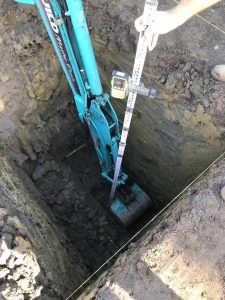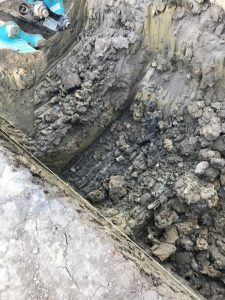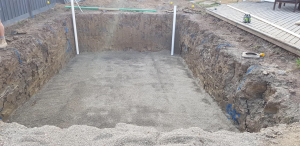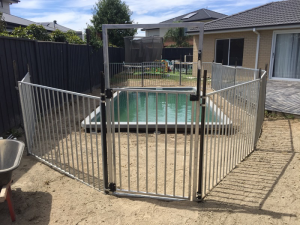Case Study: Brightstone Drive, Clyde North
A fibreglass pool is not designed to be installed in an area with too much imported fill, or it can damage the pool shell, or even worse, your pool and spa could become completely unstable and ruin your backyard. Luckily your pool builder can discover whether you will have any issues with a simple soil test before they arrange your pool installation. This is what happened with a recent pool build in Clyde North, not far from Berwick Waters.
With these up and coming suburbs in this region, including Clyde North, Berwick, Pakenham and Cranbourne, there are a lot of new home builds and subdivisions, which is where the most imported fill can be found. Although it is more common to find soil issues in new builds and subdivisions, they still only make up approximately 2-5% of our pool and spa installations.
When we arranged a site visit to our potential new customer in Clyde North, we knew we would have to arrange a soil test to analyse the soil composition before installing the pool, as we do for all of our customers. While we were there we also explored the site for any access issues, and confirmed the pool that the customer wanted was going to fit. At this point we knew the Istana 6.2m x 3.3m pool would work in this Clyde North backyard, and we would not have any access issues. From here we arranged a quote for the customer, which included the cost of the soil test, and we began preparations for this new pool build.
What is involved in a soil test?
We arranged the soil test for the customer, so all they need to do is arrange a time to give us access to their backyard. The soil tester will come to the premises and drill 2 bore holes in the ground and take these samples back to the lab for analysis. They then work on the samples and compile a report that is submitted to us approximately 2-3 days later.
What did we learn from the soil test?
A soil test can determine the composition of the soil in your backyard, including salts, organics, fill, clay, sand, gravel and silt. This particular soil test told us there was imported fill on-site, so we forwarded the results to our engineers. The engineers will then provide proposed ways to construct the pool under these circumstances. The only way for this pool installation to work effectively was to dig deeper than normal, and to add layers of stabilized rock, before compacting it to create a more stable base. This was not going to be a problem for us though as our team had done this before.
How did this impact the customer?
Unfortunately with soil composition like this, there are added costs to the customer as well as a little more time. Extra excavation and base preparation added an extra 2 days to the installation as well as an approximate cost of $6,000 extra, due to purchasing rock, extra labour and removal of more soil than normal. The customer must be advised in the quoting stage that this is a possibility, as the soil test is not arranged for the customer until the contract is signed, so although the cost of the soil test itself is included in the quotation, the potential extra costs of correcting the issues will be unknown until after a contract is signed. Luckily we had advised the customer of this potential cost before they had signed the contract so there weren’t any surprises. This customer was also lucky that they had no issues with access, so there weren’t any extra costs or delays when it came to installation. If you would like to read on limited access sites please click here.
How did the excavation and installation go?
The excavation and installation went to plan. The whole area had been filled up with imported fill so we had to over-excavate the site. This means we had to dig a lot deeper than normal to give us a stable base to work with. Once we had removed all of the imported fill we needed to from the site, we then had to bring in rock to replace the base. We dropped in layers of rock, one by one before compacting it, which created a strong base, which would protect the pool shell. The next step is to drop in the pool shell, and stabilize this. In this scenario we needed to create concrete piers for the bond beam. Basically we added PVC tubes and filled them with concrete. This is because you cannot have bond beams sitting on a property that has imported fill, as they may move over time. Once these were in our job was done, and they were ready for their landscaper to come in and finish their backyard project, complimenting their new Autumn Grey pool shell with colourful pavers and surrounding gardens. Check out some images from the site below.
Finding the expertise to determine any soil issues you may have early on can save you a lot of hassle down the track. For over 13 years Master Pools have been installing pools in South East Melbourne, Mornington Peninsula and Bayside Melbourne and can help with any kind of pool installation. If you would like a free site visit, please contact us today here.




